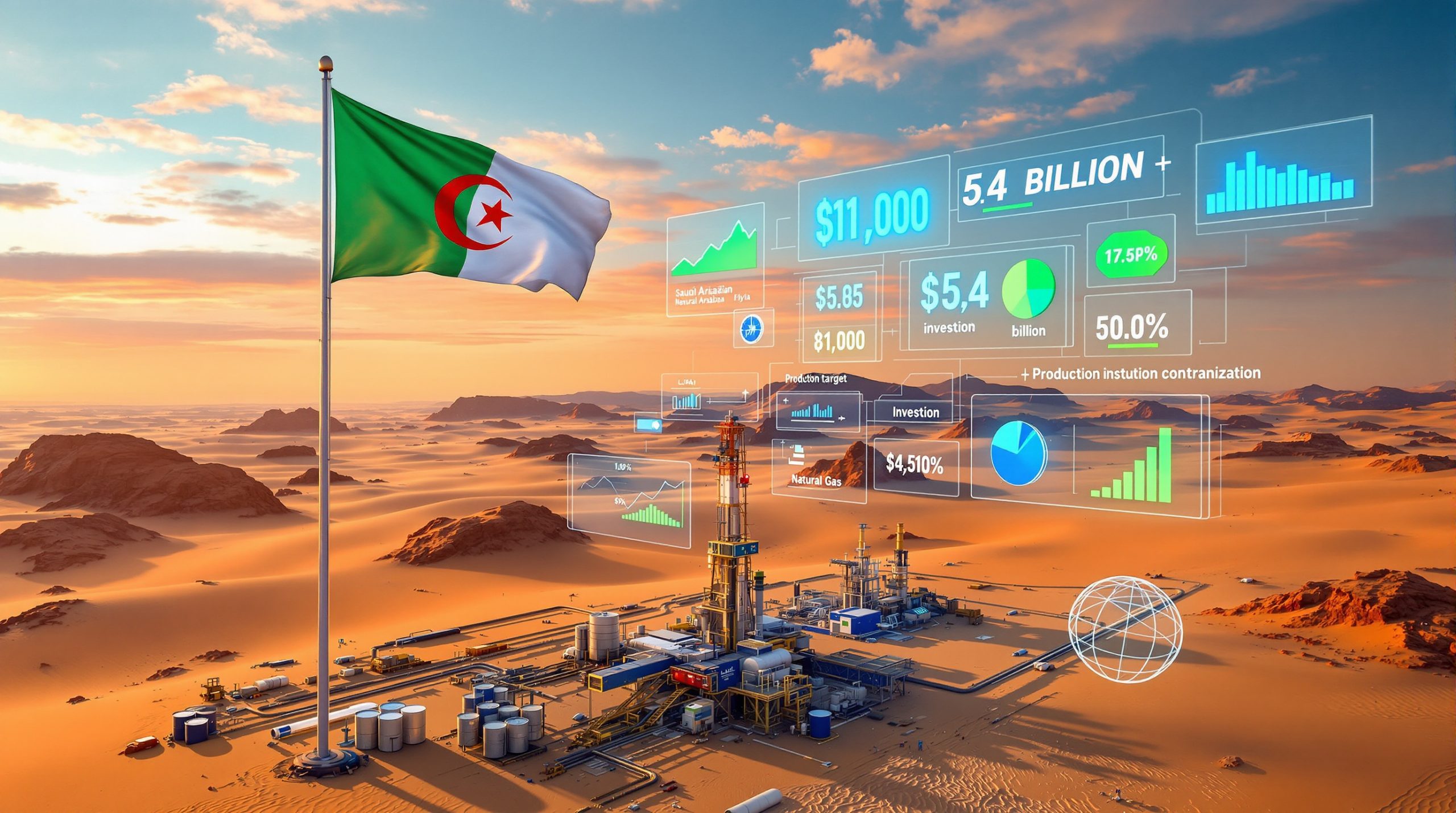What Determines Lithium Pricing in Brazil's Market?
Brazil's lithium pricing in Brazil operates within a complex framework driven by industrial innovation rather than traditional cost advantages. The country's emergence as a major lithium producer creates unique pricing dynamics that distinguish it from established markets like Australia lithium innovations and Chile.
Production Cost Leadership Through Innovation
Brazilian lithium producers have achieved remarkable cost competitiveness through technological advancement. Leading operations report all-in sustaining costs around $590-600 per tonne, positioning them as the second-lowest cost hard rock producers globally after Greenbushes.
The competitive advantage stems primarily from dense media separation (DMS) technology, which achieves cost reductions of approximately 75% compared to traditional flotation methods. This processing innovation enables recovery rates reaching 70% while eliminating the need for toxic chemicals and traditional tailings dams.
Industrial Scale and Human Capital Advantages
Brazil's cost structure benefits significantly from retained industrial engineering expertise across multiple sectors. With 98% Brazilian personnel at operating sites, producers leverage human capital from automotive, petrochemical, and other established industries rather than relying on expatriate expertise.
Processing facilities operate at substantial industrial scale, with major operations achieving 270,000 tonnes of concentrate capacity annually. This scale advantage, combined with digital automation systems that learn mine-specific mineralogy parameters, creates sustained operational efficiency.
Market Position and Competitive Dynamics
Brazil's positioning in the global cost curve reflects several key factors:
- Superior to African producers: Despite perceptions about African cost advantages, Brazilian operations maintain lower all-in costs than Nigerian, Zimbabwean, and other African hard rock operations
- Industrial vs. artisanal production: Large-scale industrial operations provide inherent cost advantages over artisanal mining components common in some jurisdictions
- Safety and environmental compliance: Western-standard safety protocols and environmental practices do not create proportional cost penalties when implemented at scale
What Are Current Lithium Prices in Brazil?
Brazilian lithium pricing in Brazil in 2025 reflects significant market volatility and structural challenges within the global lithium concentrate market. Understanding these price dynamics requires examining both spot market conditions and underlying cost structures.
Recent Price Volatility and Market Disconnection
The lithium concentrate market experienced extreme volatility in 2025, with prices falling to $607 per tonne CIF China in June 2025. At these levels, even the lowest-cost producers faced operational losses, with industry-wide impacts described as a "black swan event" affecting all metals markets post-April 2025.
During Q2 2025, when clients sought final prices of $610 per tonne, producers faced potential losses of $90 per tonne on an all-in cost basis. This pricing disconnect prompted strategic shipment delays as markets realigned with physical supply realities.
Formula Pricing and Contract Structures
Brazilian lithium concentrate employs diverse pricing mechanisms:
- Formula-based contracts: Approximately 9% of LME lithium oxide prices as of Q1 2025
- Spot and provisional pricing: Mixed arrangements with final price settlement
- Chemical index correlation: Concentrate prices track chemical indices trading approximately one-third of global annual demand
The pricing structure reveals significant market inefficiencies, with index prices often disconnected from physical concentrate supply-demand fundamentals.
Market Recovery Indicators
Price recovery signals emerged in late August 2025, coinciding with record shipment volumes of approximately 59,000 tonnes from major producers. This recovery reflected market correction toward levels supporting producer economics. Furthermore, Brazilian lithium producers are planning expansions amid these challenging price conditions.
How Do Brazilian Production Costs Compare Globally?
Brazilian lithium production costs demonstrate exceptional competitiveness achieved through technological innovation and operational efficiency rather than traditional labour cost advantages. For instance, Australia's first underground lithium mine represents similar innovation approaches in the sector.
All-In Sustaining Cost Breakdown
Sigma Lithium Cost Structure (Q2 2025):
| Cost Component | Cost per Tonne (USD) |
|---|---|
| Mining site operations | ~$350 |
| Logistics (door-to-door to China) | $90 |
| Interest/financing expenses | $70 |
| Maintenance, capex, SG&A | $70-90 |
| Total All-In Sustaining Cost | $590-600 |
Logistics Efficiency Achievements
Brazilian producers have achieved remarkable logistics optimisation:
- CIF China delivered cost: $442 per tonne (Q2 2025)
- Transportation breakdown: $40 to Brazilian port, $10 port handling/storage, $40 shipping to China
- Total door-to-door logistics: $90 per tonne including warehousing
This logistics efficiency matches or exceeds Australian producers despite longer shipping distances, achieved through strategic partnerships with major shipping companies providing tonnage allocation flexibility.
Global Cost Curve Position
Brazil maintains the second-lowest hard rock production costs globally, positioned only behind Greenbushes (Australia), which achieves lower costs through approximately 5x greater production scale rather than processing advantages.
Comparative positioning:
- Lower than all African spodumene producers including Nigeria and Zimbabwe
- Competitive with Australian operations despite higher-cost jurisdiction
- Maintained through market cycles with minimal losses even during extreme price downturns
Why Is Brazilian Lithium Priced Higher Than Global Averages?
Despite competitive production costs, Brazilian lithium faces pricing pressures from structural market factors and supply chain constraints that create premiums above global production economics. However, innovative extraction methods like geothermal brine extraction in other regions demonstrate alternative approaches to cost management.
Market Structure Challenges
Export Dependency:
Brazilian lithium production remains heavily export-oriented, with approximately 99% exported to China. This concentration creates several pricing challenges:
- Limited customer diversification opportunities
- Dependency on Chinese refinery demand cycles
- Competition for limited shipping capacity
- Currency exchange rate exposure
Supply-Demand Imbalances
Processing Capacity Constraints:
Current concentrate production exceeds local refining capability, forcing export-dependent pricing structures. Limited domestic lithium hydroxide or carbonate production creates:
- Export pressure during weak demand periods
- Reduced negotiating power with overseas customers
- Seasonal logistics constraints affecting shipment timing
- Competition for port capacity at Santos and other terminals
Quality Premium Potential
Brazilian spodumene concentrate commands quality premiums through:
- High-grade specifications: Typical 6% Li₂O content
- Consistent mineralogy: Reduced downstream processing risks
- Established quality certifications: Streamlined customer qualification
- Traceability compliance: Meeting supply chain transparency requirements
What Production Volumes Drive Brazil's Pricing Power?
Brazil's lithium production trajectory significantly influences domestic pricing dynamics and global market positioning through expanding capacity and strategic market development. In addition, global projects like the US Thacker Pass production facility impact worldwide supply dynamics.
Current Production Metrics (2025)
| Production Indicator | Volume | Growth Trajectory |
|---|---|---|
| Concentrate processing capacity | 270,000 tonnes annually | Expanding through Phase 2 |
| Chemical equivalent capacity | ~40,000 tonnes LCE | Based on concentrate output |
| Record shipment volumes | 59,000 tonnes (single cargo) | Operational efficiency gains |
Expansion Pipeline Development
Phase 2 Development Status:
- Environmental permits: Fully approved for expansion
- Mine geometry optimisation: Enlarged to feed potential second plant with consistent ore
- Processing replication: Same raw material feeding strategy to minimise commissioning risks
- Digital integration: Algorithm-learned density parameters for consistent mineralogy
The expansion strategy focuses on replicating proven processing methods with identical ore sources, reducing technical risks and accelerating production ramp-up timelines.
Strategic Production Management
During volatile pricing periods, Brazilian producers demonstrate strategic flexibility:
- Inventory management: Holding shipments during extreme price lows
- Offtake negotiations: Securing prepayment structures with Asian counterparties
- Tonnage flexibility: Automated logistics partnerships enabling variable shipment sizes
- Working capital optimisation: Lower cost of capital through Asian offtake prepayments (SOFR + 0.5-1.0%)
How Do Global Market Conditions Affect Brazilian Pricing?
Brazilian lithium pricing in Brazil remains highly sensitive to international market fluctuations, particularly Chinese demand patterns and competing supply source developments. Furthermore, regional insights from Argentina lithium brine insights provide additional market context.
Chinese Market Dependency
Demand Cycle Sensitivity:
The concentration of Brazilian exports to China creates direct exposure to:
- Battery manufacturing capacity utilisation rates
- Electric vehicle production volume fluctuations
- Energy storage system deployment schedules
- Government policy changes affecting lithium demand
Market Structure Impact:
The lithium chemical index, which drives concentrate pricing, trades volumes representing only approximately one-third of global annual demand. This thin market creates:
- Significant price disconnection from physical supply fundamentals
- "Black swan" pricing events during market stress
- Opportunity for strategic inventory management during extreme volatility
Competing Supply Dynamics
Alternative Source Competition:
- Australian spodumene: Higher logistics costs but established customer relationships
- Chilean brine production: Different product specifications but direct chemical competition
- African hard rock developments: Perceived lower costs but often artisanal components
- Lipidolite processing innovation: New ceiling pricing at approximately $15,000 per tonne chemical grade
The emergence of lipidolite processing as backup supply has effectively lowered the assumed ceiling price from previous levels of $20,000-25,000 per tonne to current $15,000 levels.
What Role Does Sustainability Play in Brazilian Lithium Pricing?
Brazilian lithium producers emphasise sustainability credentials, though direct green premiums remain absent from current market pricing structures.
Environmental and Social Standards
Operational Excellence Metrics:
- Safety performance: 12-year zero-fatality record, 2-year zero lost-time accidents
- Environmental impact: No toxic chemical usage, zero waste-to-landfill operations
- Water conservation: No drinking water consumption in processing
- Renewable energy: Integration throughout processing operations
These standards are maintained while achieving the second-lowest global production costs, demonstrating that sustainability compliance does not create proportional cost penalties at industrial scale.
Traceability Requirements and Market Access
Supply Chain Transparency:
While direct green premiums remain absent, traceability requirements increasingly influence customer selection:
- Major battery manufacturers: Companies like CATL require traceability mapping of material origins
- Automotive sector demands: End-users requiring verification of ethical sourcing practices
- Regulatory compliance: Meeting supply chain transparency legislation
- Risk mitigation: Reducing due diligence costs for downstream customers
Market Positioning Advantages
Competitive Differentiation:
Sustainability credentials provide strategic advantages through:
- Preferred supplier status: With major battery and automotive manufacturers
- Reduced qualification time: Streamlined customer onboarding processes
- Supply chain security: Long-term contract negotiation advantages
- Regulatory future-proofing: Anticipating stricter supply chain requirements
The industry recognition of these standards reflects broader market evolution toward responsible sourcing practices, similar to previous developments in cobalt supply chains.
How Do Currency Fluctuations Impact Brazilian Lithium Costs?
Exchange rate movements between the Brazilian Real and US Dollar create complex cost exposures for lithium producers with mixed currency revenue and expense structures.
Cost Structure Currency Exposure
Natural Hedging Elements:
- Export revenues: Denominated in US Dollars providing natural hedge
- Local labour costs: Brazilian Real exposure creating cost flexibility
- Equipment and maintenance: Mixed USD/BRL depending on sourcing
- Financing costs: $70 per tonne in interest expenses, declining as debt repaid
Brazilian producers benefit from natural hedging through USD-denominated export revenues offsetting BRL-denominated operational costs. This structure provides some protection against Real strength while maintaining cost competitiveness during Real weakness.
Working Capital Management
Financial Strategy Optimisation:
Producers employ strategic financial management through:
- Offtake prepayments: Asian counterparties offering financing at SOFR + 50-100 basis points
- Contract currency optimisation: Mixed currency arrangements reducing exposure
- Debt reduction focus: Lowering per-tonne interest costs through accelerated repayment
- Regional financing: Leveraging lower Asian capital costs through supply agreements
What Are the Investment Implications of Brazilian Lithium Pricing?
Current pricing dynamics create specific investment considerations across the lithium value chain, with implications for both producers and downstream participants.
Producer Investment Economics
Expansion Justification:
Strong cost positioning supports capacity expansion decisions:
- Resilient margins: Maintained profitability even during extreme price downturns
- Proven technology: Dense media separation replication reducing technical risks
- Infrastructure leverage: Existing logistics and processing expertise
- Market access: Established customer relationships and offtake potential
Risk Management Considerations:
- Price volatility exposure: "Black swan" events creating temporary losses
- Market concentration: Heavy dependence on Chinese demand
- Infrastructure constraints: Port capacity and logistics limitations
- Regulatory environment: Permitting and environmental compliance requirements
Strategic Investment Opportunities
Value Chain Integration Potential:
Brazil's industrial capabilities suggest opportunities for:
- Downstream processing: Lithium hydroxide and carbonate production facilities
- Battery materials manufacturing: Leveraging domestic lithium supplies
- Technology development: Dense media separation and processing innovation
- Supply chain optimisation: Logistics infrastructure and port facility expansion
Market Development Focus:
- Customer diversification: Reducing Chinese market dependency
- Regional supply chains: Developing Americas-focused battery supply networks
- Sustainability leadership: Capitalising on traceability and environmental credentials
What Future Trends Will Shape Brazilian Lithium Pricing?
Several emerging trends will likely influence Brazilian lithium pricing in Brazil dynamics through 2030 and beyond, driven by technological developments and evolving market structures. Additionally, monitoring lithium commodity prices provides essential market context.
Technological Evolution Impact
Processing Innovation Continuation:
- Dense media separation advancement: Further optimisation of digital automation and recovery rates
- Alternative processing methods: Potential direct lithium extraction technology adoption
- Waste stream utilisation: Converting processing byproducts into revenue streams
- Energy efficiency improvements: Renewable energy integration reducing operational costs
Market Structure Changes:
- Customer diversification: Reduced Chinese market concentration through regional development
- Integrated production models: Downstream processing capacity within Brazil
- Supply chain localisation: Regional battery material supply chain development
- Recycling integration: Circular economy approaches affecting primary demand
Policy and Regulatory Developments
Government Support Mechanisms:
Brazilian government initiatives may include:
- Mining sector modernisation: Infrastructure development and technology support
- Export promotion: Trade facilitation and logistics improvements
- Domestic value addition: Incentives for downstream processing investment
- Environmental standards: Continued emphasis on sustainable production practices
International Trade Factors:
- Critical mineral classifications: Strategic material designations affecting trade flows
- Supply chain security requirements: Traceability and origin verification mandates
- Trade agreement impacts: Regional trade facilitation affecting competitiveness
- Tariff structure evolution: Protection or promotion through trade policy
Market Psychology and Investment Patterns
Industry Maturation Process:
The lithium sector's evolution toward greater market sophistication includes:
- Physical-financial market alignment: Improved correlation between concentrate and chemical indices
- Long-term contract prevalence: Reduced spot market volatility through offtake agreements
- Technology standard establishment: Industry-wide adoption of proven processing methods
- Sustainability integration: Environmental and social standards becoming baseline requirements
Investment Strategy Evolution:
- Focus on operational excellence: Cost leadership through technological innovation
- Strategic positioning: Market access and customer relationship development
- Risk management sophistication: Hedging strategies and contract optimisation
- Sustainability leadership: Environmental and social performance differentiation
Competitive Landscape Development
Brazilian Market Positioning:
Brazil's competitive advantages are likely to strengthen through:
- Industrial expertise leverage: Continued utilisation of domestic engineering capabilities
- Scale economics: Production volume increases supporting cost leadership
- Technology differentiation: Dense media separation and processing innovation leadership
- Supply chain integration: Domestic value addition and regional market development
The combination of proven cost competitiveness, technological innovation, and strong sustainability credentials positions Brazilian lithium producers favourably for long-term market development despite current pricing challenges and structural market limitations.
Brazilian lithium pricing in Brazil reflects the country's emergence as a significant global producer with competitive production costs but structural market challenges. Current dynamics favour producers with strong cost positions and operational flexibility, while future success will depend on market diversification, technological leadership, and strategic positioning within evolving global supply chains.
Investment Consideration: Brazilian lithium presents compelling fundamentals through competitive production costs, technological innovation, and sustainability leadership. However, managing price volatility and market concentration risks remains essential for optimising investment returns in this dynamic sector.
Looking for Your Next Lithium Investment Opportunity?
Discovery Alert's proprietary Discovery IQ model delivers instant notifications on significant ASX lithium discoveries, helping investors identify actionable opportunities before broader market awareness develops. With Brazilian lithium pricing demonstrating the importance of timing and market positioning, explore Discovery Alert's discoveries page to understand how major mineral discoveries can generate substantial returns, then begin your 30-day free trial to gain a market-leading advantage.




